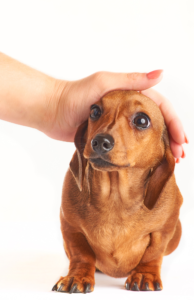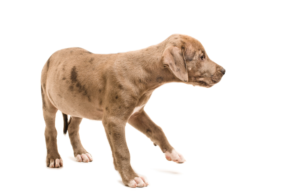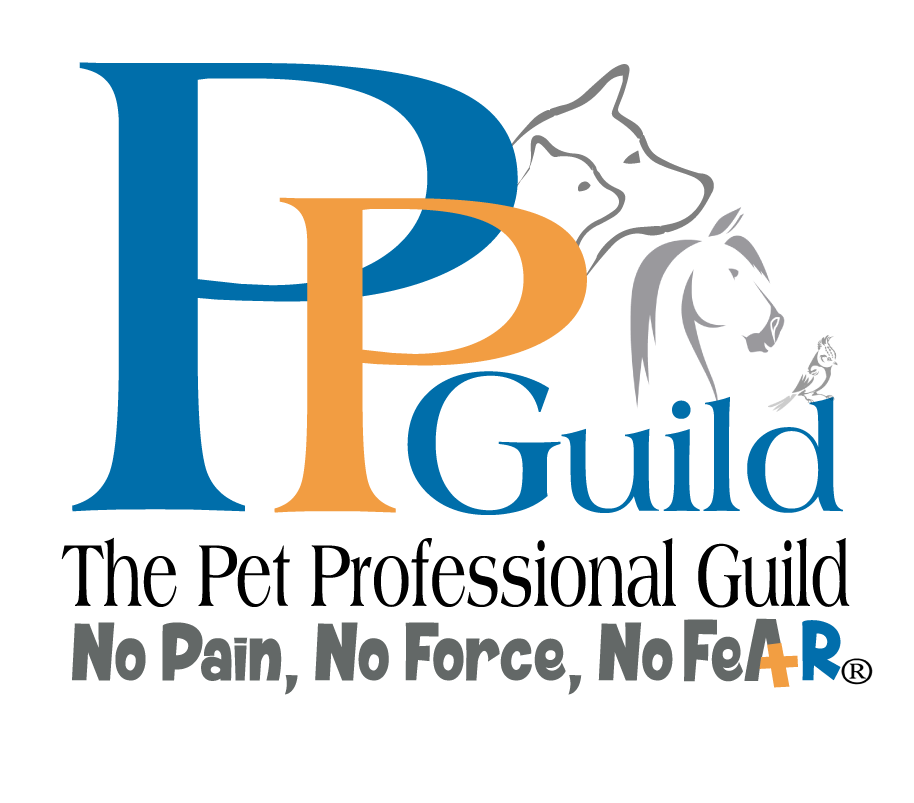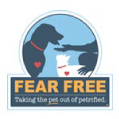Dogs are wonderful companions, but it’s important to understand that they have their own unique ways of communicating their feelings to us. While some dogs may bark, growl or even bite when they’re uncomfortable, stressed, or afraid, others may exhibit more subtle behaviors that can be harder to pick up on. By learning to recognize these subtle signals, you can be better at understanding your puppy’s thoughts: you don’t have to be a mind reader and respond appropriately to their needs.
Understanding Your Puppy’s Thoughts
What does it mean when a puppy ducks their head?
One of the most common signs that a dog is uncomfortable is when they duck their head away when we try to pat them. While we might see this as a sign of shyness or being timid, it’s actually an indication that the dog is feeling uneasy. By ducking their head away, a puppy is trying to create some distance between themselves and the person or object that’s making them feel uncomfortable.
You may also notice your puppy ducks their head or turns away when trying to put on their collar or harness. This could be a sign that the puppy has had a negative experience with collars or harnesses in the past. It could also mean the collar or harness is new to them and they are simply feeling nervous or anxious. In some cases, it may be necessary to slowly and gently introduce your puppy to the collar or harness. This will allow your puppy to become comfortable with it before needing to wear it.
Avoiding Eye Contact
If a puppy is avoiding eye contact or averting their eyes from a human or another dog, it can be a clear sign that they are uncomfortable, anxious, or want to be left alone. This behavior can be a subtle cue that your puppy is feeling stressed or overwhelmed and needs some space.
Can you recall a time when you avoided contact with someone to avoid them for one reason or another?
Raising a Paw
An easily recognizable sign of a puppy’s uncertainty is when they raise a paw. This signal may be easier to see, but is easily missed. Your puppy may raise their paw in situations where they are unsure of what to do or feels threatened. The raised paw is often a way for a puppy to signal that they need space, or that they are not comfortable with the current situation.
For example, a puppy may raise their paw when they meet a new person or dog or raise their paw if they hear a sudden noise as a way of indicating that they are unsure how to approach the situation.
Moving Away
When a dog moves away from something they are trying to increase their distance in order to be more comfortable. This could be something as simple as moving away from a loud noise. It could be something more complex, such as moving away from a person or animal they are uncomfortable with.
If your puppy is moving away from something, it’s important to respect their boundaries and allow them to do so. Forcing your puppy to stay in a situation they are uncomfortable with can lead to anxiety and stress.
Can you recall a situation where you move away to feel more comfortable? Have you ever moved away when someone entered the elevator while you were on it?
Making the Choice to NOT Move Forward or Actively Avoiding ‘Things’
When our puppy isn’t moving forward it can often be seen as being “difficult” or “stubborn”. Another way your puppy will communicate their stress or uncertainty is by choosing not to move forward towards objects, people, or other stimulus. For example, if a puppy is hesitant to approach a new person, object, or environment, it can be a sign that they are feeling unsure, anxious, or frightened. This behavior may also include backing away, freezing in place, or even cowering or hiding.
Another way your puppy communicates with you is by actively avoiding something. Sometimes this can be viewed as the puppy is “just being silly” or the puppy is being “dramatic”. This can be seen in situations where your puppy is hesitant to approach a person, object, or other stimulus. For example, if your puppy is uncomfortable around other dogs, they may avoid walking in areas where other dogs are present or try to keep their distance.
Similarly, if your puppy is not comfortable with a certain person, they may avoid being in the same room or may try to stay out of their way. Actively avoiding something is a sign that your puppy is fearful or unsure. It’s important to respect their boundaries and not force them into situations they are not comfortable with.
Your puppy has their own, unique language. I wrote about some other body language signals in a previous blog.
What Else is My Puppy Trying to Say?
Your puppy is going to convey their emotions and how they feel through a variety of subtle signals, including body posture, facial expressions, and vocalizations. These signals are often very subtle and can be easily missed if we are not paying attention. Some common signals to watch for include:
- Tail position: A dog’s tail can tell us a lot about how they are feeling. A relaxed tail indicates a happy, relaxed dog, while a tucked tail indicates fear or anxiety. A high, stiff tail can indicate aggression or excitement.
- Ears: A dog’s ears can also tell us a lot about how they are feeling. Forward-facing ears indicate alertness and interest, while flattened ears indicate fear or anxiety.
- Body posture: A dog’s body posture can also give us clues about how they are feeling. A relaxed, loose posture indicates a happy, relaxed dog, while a stiff, tense posture indicates fear or anxiety.
- Vocalizations: Dogs also use vocalizations to communicate their emotions and intentions. Whining, growling, and barking are all common vocalizations that can indicate different emotions, from fear to excitement.
Final Thoughts
Understanding your puppy’s subtle signals of discomfort, uncertainty, or fear is crucial to building a strong relationship with them. It’s also a key component to their well-being. Pay attention to your puppy’s body language and be sensitive to their needs. If you notice any of these signs, it’s essential to respect your puppy’s space and give them time to feel more comfortable. In some cases you may need to remove them from the situation, entirely. By paying attention to our puppy’s subtle signals, we can strengthen our bond with them and ensure they feel safe and secure in our presence. Your puppy can feel more confident when they know you have their back.
Puppies are cute, but they don’t come with instruction manuals. Need some help? Yes, send in the reinforcements.












